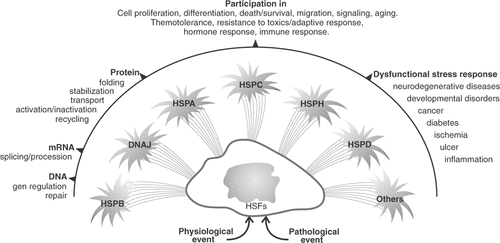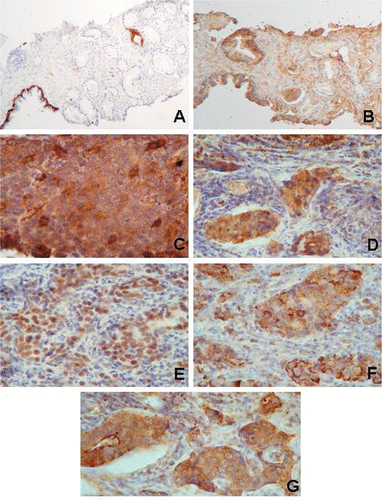Figures & data
Table I. New nomenclature of the main HSP (complete list in Kampinga et al. Citation[13]).
Table II. Studies evaluating HSP during the tumorigenesis of prostate cancer.
Table III. Studies evaluating HSP in the prognosis of prostate cancer patients.
Table IV. Targeting HSP in prostate cancer.


